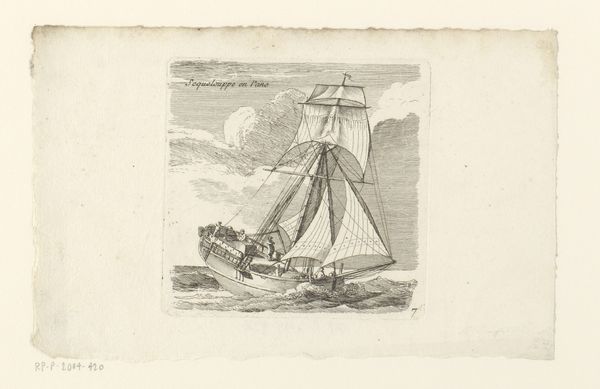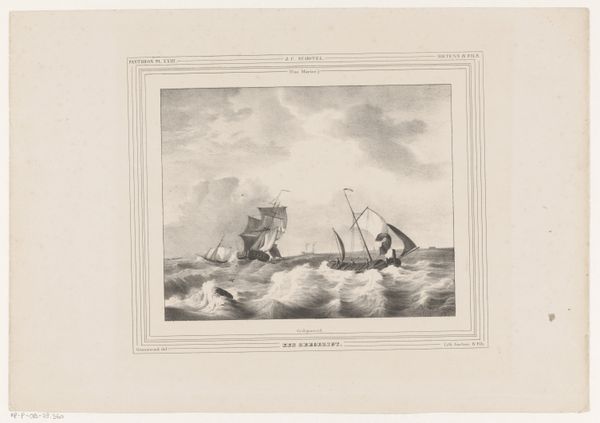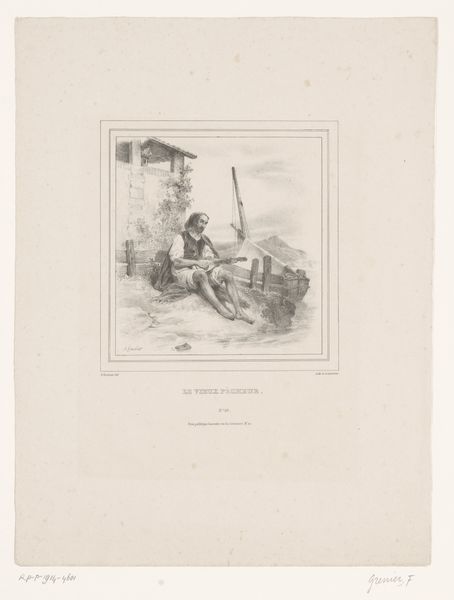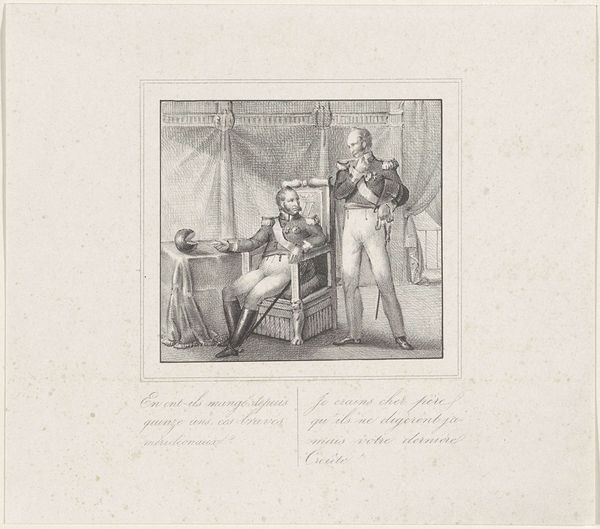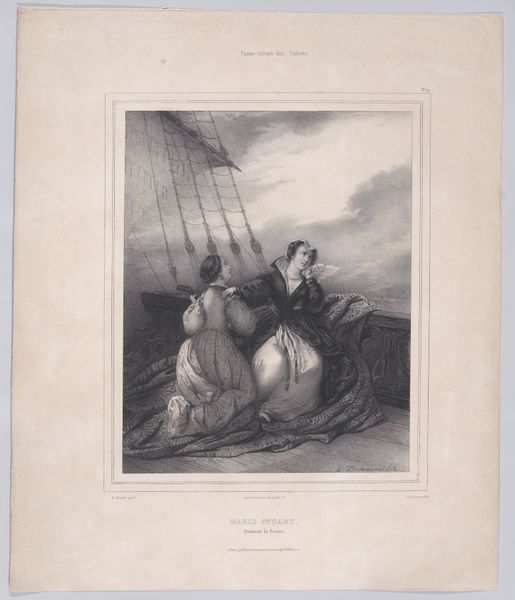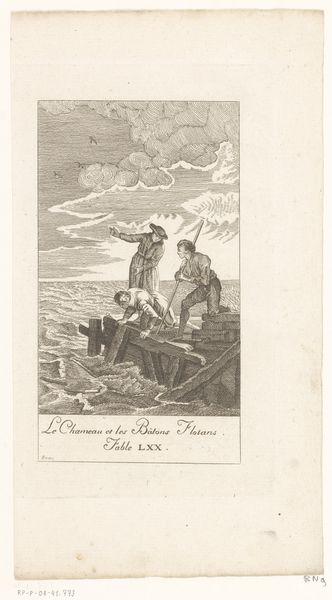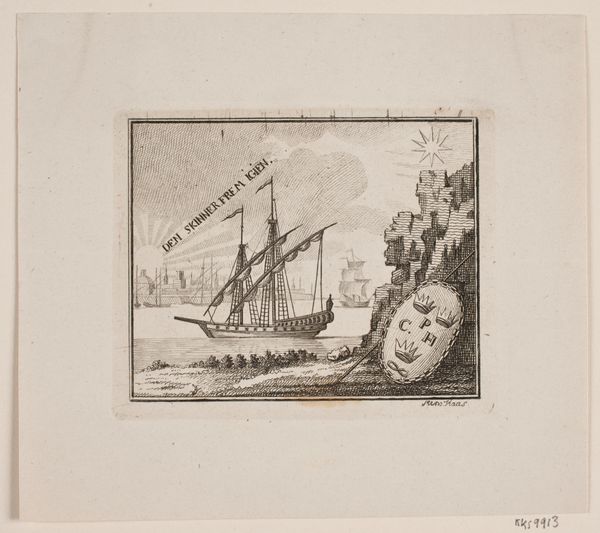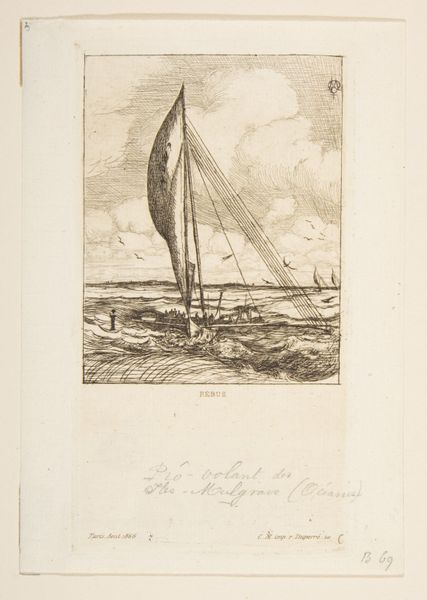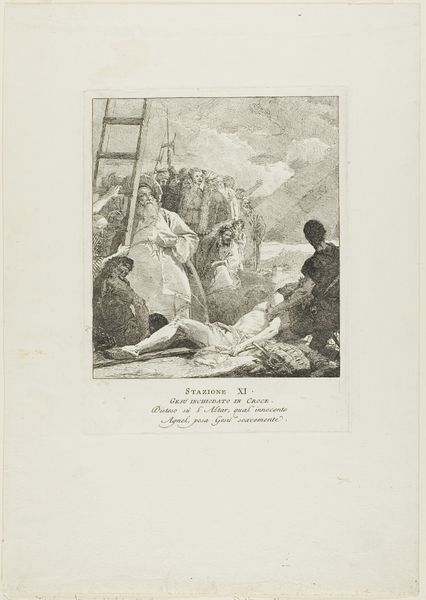
print, etching, paper, engraving
#
portrait
#
neoclacissism
#
allegory
# print
#
etching
#
paper
#
romanticism
#
history-painting
#
engraving
Dimensions: 353 mm (height) x 245 mm (width) (bladmaal), 186 mm (height) x 183 mm (width) (plademaal), 149 mm (height) x 152 mm (width) (billedmaal)
Editor: So, here we have J.F. Clemens' engraving, "Napoleon vejer menneskenes skæbne," placing Napoleon himself on this makeshift ship deck with a cannon in the background and he’s weighing human destiny, seemingly against his own military pursuits. What I immediately see is a very deliberate composition...the way the light and shadow play with each other using only engravings on paper...It's quite powerful! What do you notice, from your perspective? Curator: For me, it's all about the context of production here. Etchings like these were crucial tools of propaganda. They were easily reproduced and disseminated widely, shaping public opinion through readily accessible imagery. Notice how Napoleon is elevated, almost deified. The scales are the instrument that allows this single figure to alter production across his empire, a truly industrial revolution through military and imperial force. Editor: Propaganda, okay! So, the material—a print—becomes just as important as the image itself? It challenges the romantic notions of what Napoleon wanted his reign to be seen as. Curator: Absolutely! This wasn't about high art hanging in a palace. This was about controlling the means of visual production to disseminate power on a massive scale. It really forces you to confront how these seemingly simple materials become tools to reshape society. Consider also how different that would be if Napoleon commissioned massive sculptures of himself instead. The choice to disseminate the propaganda via paper would give his messages more reach. What impact do you think that might have had at the time? Editor: That is fascinating. It reframes the entire piece. I initially saw allegory, but you’ve shown me how understanding the means of production reveals Clemens’ intent to use Napoleon's image as more than just a symbol—as a carefully manufactured persona distributed to the masses through material processes. I'll never look at engravings the same way. Curator: Precisely! Examining art through the lens of materials and social context unlocks a whole new layer of meaning. These works can be reproduced an infinite amount of times! That should have us thinking critically.
Comments
No comments
Be the first to comment and join the conversation on the ultimate creative platform.
